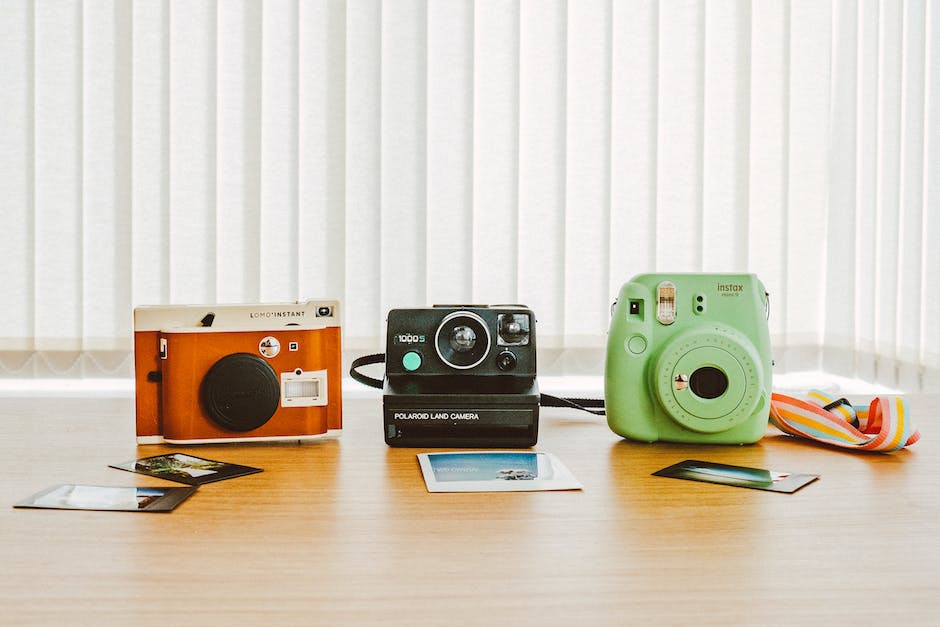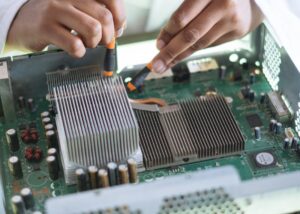-
Table of Contents
- The Impact of Megapixels: Debunking the Myth of Higher Resolution
- Understanding the Limitations of Smartphone Camera Sensors
- Exploring the Role of Software Processing in Smartphone Photography
- The Importance of Optics: Why Lens Quality Matters
- Demystifying the Influence of Hardware Components on Image Quality
- Q&A
“Quality over quantity: Enhancing smartphone photography with precision, not just numbers.”
The number of cameras on Android and iOS devices has been increasing in recent years. However, it is important to note that having more cameras does not necessarily guarantee better photos.
The Impact of Megapixels: Debunking the Myth of Higher Resolution
In today’s smartphone market, one of the most common selling points for Android and iOS devices is the number of megapixels their cameras possess. It seems that every new release boasts a higher resolution than its predecessor, with some devices even reaching the staggering 108-megapixel mark. However, the question remains: does more megapixels really mean better photos?
To answer this question, we must first understand what megapixels are and how they affect image quality. Megapixels refer to the number of pixels, or tiny dots of color, that make up an image. The more megapixels a camera has, the more detail it can capture. This is because each pixel represents a tiny portion of the image, and the more pixels there are, the more information can be recorded.
However, it is important to note that megapixels alone do not determine the overall quality of a photograph. While higher resolution can result in sharper images, it is not the sole factor that contributes to a great photo. Other elements such as sensor size, lens quality, and image processing algorithms also play a significant role in determining image quality.
One of the main drawbacks of cramming more megapixels into a smartphone camera is the decrease in pixel size. As the number of pixels increases, each individual pixel becomes smaller. This can lead to a phenomenon known as pixel crosstalk, where adjacent pixels interfere with each other, resulting in noise and reduced image quality. In low-light conditions, this can be particularly problematic, as smaller pixels struggle to capture enough light to produce a clear and noise-free image.
Another factor to consider is the size of the camera sensor. A larger sensor allows for more light to be captured, resulting in better low-light performance and improved dynamic range. However, increasing the number of megapixels often means reducing the size of each individual pixel, which in turn reduces the overall size of the sensor. This trade-off can have a negative impact on image quality, especially in challenging lighting conditions.
Furthermore, the quality of the lens used in a smartphone camera is crucial in determining image sharpness and clarity. A high-quality lens can compensate for the limitations of a smaller sensor and help produce stunning images. However, many smartphone manufacturers prioritize megapixels over lens quality, resulting in photos that may appear sharp at first glance but lack the fine details and overall clarity that a better lens can provide.
Lastly, the image processing algorithms employed by smartphone cameras also play a significant role in determining image quality. These algorithms are responsible for tasks such as noise reduction, color reproduction, and dynamic range enhancement. While higher resolution can provide more information for these algorithms to work with, it does not guarantee better results. In fact, some manufacturers may prioritize aggressive noise reduction or oversharpening to compensate for the limitations of smaller pixels, resulting in artificial-looking images.
In conclusion, while it may be tempting to believe that more megapixels automatically translate to better photos, the reality is far more complex. Higher resolution can certainly result in sharper images, but it is not the sole determinant of image quality. Factors such as sensor size, lens quality, and image processing algorithms all contribute to the overall performance of a smartphone camera. Therefore, it is important for consumers to consider these factors holistically when evaluating the camera capabilities of Android and iOS devices, rather than solely focusing on the number of megapixels.
Understanding the Limitations of Smartphone Camera Sensors
In recent years, smartphone manufacturers have been engaged in a race to pack as many cameras as possible into their devices. The latest Android and iOS smartphones boast impressive camera arrays, with some models featuring up to four or even five lenses. The idea behind this trend is that more cameras will result in better photos. However, it is important to understand the limitations of smartphone camera sensors and why simply adding more lenses does not necessarily equate to improved image quality.
One of the main limitations of smartphone camera sensors is their size. Compared to dedicated cameras, smartphone sensors are significantly smaller. This size constraint affects the amount of light that can be captured by the sensor, resulting in lower image quality, especially in low-light conditions. While manufacturers have made significant advancements in sensor technology, the physical limitations of size cannot be completely overcome.
Another limitation is the quality of the lenses used in smartphone cameras. Due to the compact size of smartphones, the lenses used are often smaller and less sophisticated than those found in dedicated cameras. This can result in issues such as distortion, chromatic aberration, and reduced sharpness. While software algorithms can help mitigate some of these issues, they cannot completely compensate for the limitations of the physical lens.
Furthermore, the number of lenses on a smartphone does not necessarily translate to better image quality. In fact, adding more lenses can sometimes lead to more complexity and compromises in image quality. Each lens in a smartphone camera array serves a specific purpose, such as wide-angle, telephoto, or macro photography. However, the more lenses that are added, the more compromises need to be made in terms of size, quality, and overall performance.
Additionally, the software processing that takes place after the image is captured plays a crucial role in the final result. Smartphone cameras heavily rely on computational photography techniques to enhance images. These techniques involve algorithms that analyze multiple frames, combine them, and apply various adjustments to improve the overall image quality. While this can result in impressive results, it is important to note that the final image is not a true representation of what the sensor captured. It is a result of software manipulation and can sometimes lead to artificial-looking images.
It is also worth mentioning that the number of megapixels does not necessarily equate to better image quality. While higher megapixel counts can allow for more detail to be captured, it is not the sole determinant of image quality. Factors such as sensor size, pixel size, and overall sensor technology play a significant role in determining the image quality. In fact, cramming more megapixels into a small sensor can lead to increased noise and reduced low-light performance.
In conclusion, while the trend of adding more cameras to Android and iOS smartphones may seem promising, it is important to understand the limitations of smartphone camera sensors. The size constraints, lens quality, and software processing all contribute to the overall image quality. Simply adding more lenses does not necessarily result in better photos. It is crucial for consumers to consider factors such as sensor size, lens quality, and overall image processing capabilities when evaluating smartphone cameras. Ultimately, it is the combination of these factors that determines the true quality of the photos captured by smartphone cameras.
Exploring the Role of Software Processing in Smartphone Photography
In recent years, smartphone manufacturers have been engaged in a race to equip their devices with more and more cameras. It seems that every new flagship Android or iOS device boasts an impressive array of lenses, promising to deliver stunning photos. However, the number of cameras on a smartphone does not necessarily translate to better image quality. In fact, the true key to exceptional smartphone photography lies in the software processing capabilities.
While it is true that having multiple cameras can offer some advantages, such as improved zoom capabilities and depth sensing, the quality of the final image ultimately depends on how the software processes the data captured by these cameras. The role of software processing in smartphone photography cannot be overstated. It is the software that determines how the image is processed, enhanced, and ultimately presented to the user.
One of the most critical aspects of software processing is the algorithm used to process the image data. This algorithm is responsible for tasks such as noise reduction, color correction, and sharpening. A well-designed algorithm can significantly improve the overall image quality, even with a single camera. On the other hand, a poorly implemented algorithm can result in subpar image quality, regardless of the number of cameras on the device.
Another crucial factor in software processing is the level of control it offers to the user. Many smartphone manufacturers have recognized the importance of giving users the ability to adjust various parameters manually. This allows photographers to have more creative control over their images and tailor the processing to their specific preferences. However, not all smartphone cameras offer the same level of manual control. Some devices limit the user’s ability to adjust settings, relying heavily on automatic processing. This can be a disadvantage for more experienced photographers who prefer to have full control over the image processing.
Furthermore, the software processing capabilities of a smartphone camera can also impact its low-light performance. Low-light photography has always been a challenge for smartphone cameras due to their small sensor size. However, advancements in software processing have allowed manufacturers to mitigate this issue to some extent. Techniques such as computational photography and multi-frame noise reduction have been employed to improve low-light image quality. These techniques rely on sophisticated algorithms to merge multiple exposures and reduce noise, resulting in brighter and more detailed images. Therefore, even with a single camera, a smartphone with advanced software processing capabilities can produce impressive low-light photos.
It is worth noting that the hardware components of a smartphone camera, such as the sensor and lens quality, still play a significant role in image quality. However, without effective software processing, the full potential of these hardware components cannot be realized. The software acts as the bridge between the hardware and the final image, shaping and refining the captured data to produce a visually pleasing result.
In conclusion, the number of cameras on a smartphone does not guarantee better photos. The true key to exceptional smartphone photography lies in the software processing capabilities. The algorithm used to process the image data, the level of control offered to the user, and the ability to handle low-light situations are all critical factors that determine the quality of smartphone photos. Therefore, when evaluating smartphone cameras, it is essential to consider not only the hardware but also the software processing capabilities to ensure the best possible image quality.
The Importance of Optics: Why Lens Quality Matters
In today’s smartphone market, one of the most prominent features that manufacturers boast about is the number of cameras on their devices. It seems like every new Android or iOS release comes with an increased number of lenses, promising better photos and enhanced photography capabilities. However, the truth is that more cameras on a smartphone does not necessarily equate to better image quality. In fact, the quality of the lens itself plays a crucial role in determining the overall photo quality.
When it comes to photography, the lens is the most critical component. It is responsible for capturing light and focusing it onto the image sensor, which then converts the light into a digital image. The quality of the lens directly affects the sharpness, clarity, and overall image quality. While having multiple lenses can offer versatility in terms of different focal lengths and shooting modes, it does not guarantee superior image quality if the lenses themselves are of subpar quality.
One of the key factors that determine the quality of a lens is the materials used in its construction. High-quality lenses are typically made from premium materials such as glass or specialized optical elements. These materials allow for better light transmission, reduced distortion, and improved color accuracy. On the other hand, cheaper lenses made from lower-grade materials may introduce various optical aberrations, resulting in blurry or distorted images.
Another crucial aspect of lens quality is the design and construction. A well-designed lens incorporates advanced optical elements and precise engineering to minimize aberrations and maximize image sharpness. This includes elements such as aspherical lenses, which help correct spherical aberration and reduce distortion. Additionally, lens coatings are applied to reduce lens flare and ghosting, resulting in better contrast and color reproduction.
Furthermore, the size of the lens also plays a significant role in image quality. A larger lens allows for more light to enter the camera, resulting in better low-light performance and improved dynamic range. This is particularly important in challenging lighting conditions where smaller lenses may struggle to capture enough light, leading to noisy or underexposed images.
While smartphone manufacturers often market their devices based on the number of cameras they offer, it is essential to remember that more cameras do not necessarily mean better image quality. In fact, some smartphones with a single high-quality lens can produce superior photos compared to devices with multiple lower-quality lenses. It is the lens quality, not the quantity, that truly matters.
In conclusion, the importance of optics cannot be overstated when it comes to smartphone photography. The lens quality directly impacts the sharpness, clarity, and overall image quality. While having multiple cameras on a smartphone may offer versatility, it is the quality of the lens itself that determines the true photographic capabilities. Premium materials, advanced design, and larger lens size all contribute to superior image quality. So, the next time you consider purchasing a smartphone based on the number of cameras it has, remember that it is the lens quality that truly matters for capturing stunning photos.
Demystifying the Influence of Hardware Components on Image Quality
In today’s smartphone market, one of the key selling points for both Android and iOS devices is the camera quality. Manufacturers are constantly striving to outdo each other by adding more and more cameras to their devices. However, the number of cameras on a smartphone does not necessarily equate to better photo quality. In this article, we will demystify the influence of hardware components on image quality and explain why more cameras don’t always mean better photos.
When it comes to capturing stunning photos, the hardware components of a smartphone play a crucial role. These components include the image sensor, lens, and image processing algorithms. While it is true that having multiple cameras can offer certain advantages, such as improved zoom capabilities or depth sensing, the quality of the image ultimately depends on the overall performance of these components.
The image sensor is perhaps the most important hardware component when it comes to capturing high-quality photos. It is responsible for converting light into digital signals, which are then processed to create the final image. The size and quality of the image sensor greatly impact the level of detail, dynamic range, and low-light performance of the photos. Simply adding more cameras does not necessarily mean that the image sensor is of higher quality.
Another crucial component is the lens. The lens determines the amount of light that reaches the image sensor and affects factors such as sharpness, distortion, and color accuracy. While having multiple lenses can offer versatility in terms of different focal lengths or specialized features like wide-angle or telephoto capabilities, the quality of the lens itself is what truly matters. A high-quality lens will produce sharper and more accurate images, regardless of the number of cameras.
In addition to the image sensor and lens, image processing algorithms also play a significant role in determining the final image quality. These algorithms are responsible for tasks such as noise reduction, color correction, and dynamic range enhancement. While having more cameras can provide additional data for these algorithms to work with, the effectiveness of the algorithms themselves is what ultimately determines the quality of the final image. A device with a single camera and superior image processing algorithms can often produce better photos than a device with multiple cameras and subpar algorithms.
It is also worth noting that the overall hardware and software integration of a smartphone greatly impacts image quality. A device with well-optimized hardware and software will be able to extract the maximum potential from its camera setup, resulting in better photos. On the other hand, a device with multiple cameras but poor integration may suffer from issues such as inconsistent color reproduction or slow autofocus.
In conclusion, the number of cameras on a smartphone does not necessarily translate to better photo quality. While multiple cameras can offer certain advantages, such as improved zoom or depth sensing capabilities, the overall performance of the image sensor, lens, and image processing algorithms is what truly matters. A device with a single camera and superior hardware components can often produce better photos than a device with multiple cameras and inferior components. Therefore, it is important for consumers to look beyond the number of cameras and consider the overall quality and integration of the hardware components when choosing a smartphone for photography purposes.
Q&A
1. Why do more cameras on Android and iOS not necessarily mean better photos?
Having more cameras does not guarantee better photo quality as the number of cameras does not directly correlate with image quality.
2. What factors contribute to better photo quality on smartphones?
Factors such as sensor size, lens quality, image processing algorithms, and software optimization play a significant role in determining photo quality on smartphones.
3. Can a single camera on a smartphone produce better photos than multiple cameras?
Yes, a single camera with high-quality components and advanced software can produce better photos compared to multiple cameras with lower quality components and subpar software.
4. Are there any disadvantages to having multiple cameras on smartphones?
Having multiple cameras can increase the complexity and cost of the device, and it may not always result in a significant improvement in photo quality. Additionally, it can lead to a bulkier design.
5. What should consumers consider when looking for a smartphone with good camera capabilities?
Consumers should consider factors like sensor size, lens quality, image stabilization, low-light performance, and software processing capabilities to determine the camera capabilities of a smartphone. The number of cameras alone should not be the sole deciding factor.More cameras on Android and iOS devices do not necessarily result in better photos.









